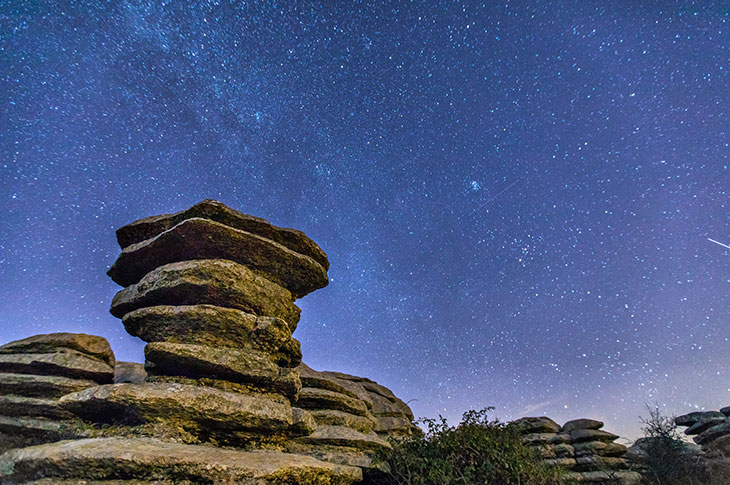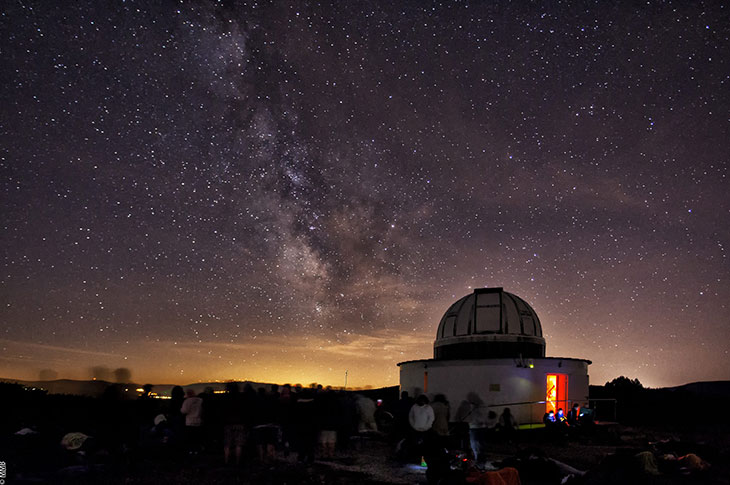The best spots in Spain to enjoy winter astrotourism
Observatories and landscapes that prove why Spain is a world leader in star tourism
In Spain, winter opens the door to an alternative tourism gaining more and more followers every year: astronomical observation. Far from the light pollution of major cities, various regions of the country have consolidated themselves as international leaders thanks to their clear skies, many of which are recognized as Starlight Reserves. From natural sites of unique scenic value to cutting-edge observatories, travelers will discover a range of offerings that combine science, nature, and the chance to escape amid some privileged settings. Spain is home to than a dozen Starlight Reserves recognized by the eponymous foundation, guaranteeing optimal conditions for celestial observation. They include the island of La Palma, with the Roque de los Muchachos Observatory, located next to the Caldera de Taburiente National Park; or Tenerife, where Teide and its observatory allow for stargazing throughout the year. Another must-visit can be found in the Montsec Astronomical Park, in Lleida, endorsed by UNESCO and home to the largest telescope in Catalonia. Observatories and science within travelers’ reach Some destinations have invested in facilities that combine scientific outreach and tourist appeal. In Valladolid, the Tiedra Astronomical Center offers both daytime and nighttime sessions in an undeniably charming rural setting. In Valencia, the Aras de los Olmos Observatory is located in Alto Turia, one of the clearest skies in the Region of Valencia. And, in Málaga, the renowned Torcal de Antequera combines a unique karst landscape with an observatory that schedules activities all year round.

Natural landscapes under clear skies Beyond scientific infrastructure, there are certain natural spaces that stand out for the purity of their night skies. The Barranco de la Hoz, Guadalajara, within the Alto Tajo Natural Park, offers a clear example of this and has been recognized as a Starlight Reserve. In Extremadura, the Monfragüe National Park reveals exceptional viewpoints for astronomers and enthusiasts. Meanwhile, Navarre presents the Foz de Arbayún, with unique panoramas at the foothills of the Pyrenees, while Sierra Morena and Sierra Nevada consolidate Andalusia as a key region for star tourism. This list of destinations is rounded off with a few up-and-coming proposals. In Galicia, visitors will find the Forcarei Observatory (Pontevedra) surrounded by a dark environment that facilitates observation even with its variable climate. La Rioja organizes summer-observation sessions, while in Segovia, the Hoces del Duratón Nature Park and Riaza have recently been added to the Starlight Foundation’s catalog of certified destinations. All of them reinforce Spain's position as a leading destination for astronomical tourism, even in the winter season.

Finally, when it comes to astronomical tourism, it’s important to remember that in 2026, as well as in 2027 and 2028, Spain will become one of the top destinations in the world for eclipse viewing (https://eclipses.ign.es/). The event on August 26, 2026, will be the first total solar eclipse in over a hundred years in Spain, visible from many attractive tourist destinations.

